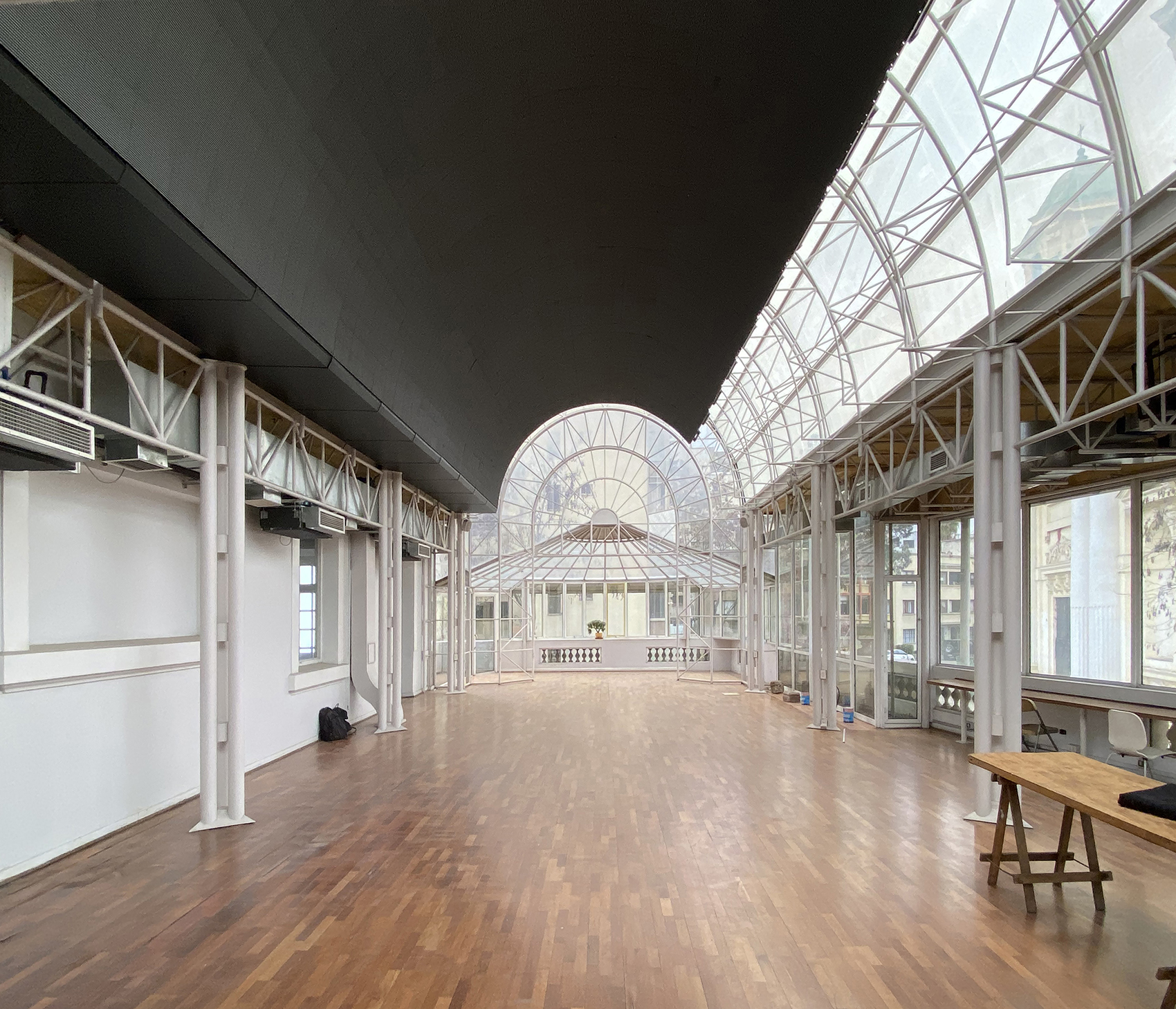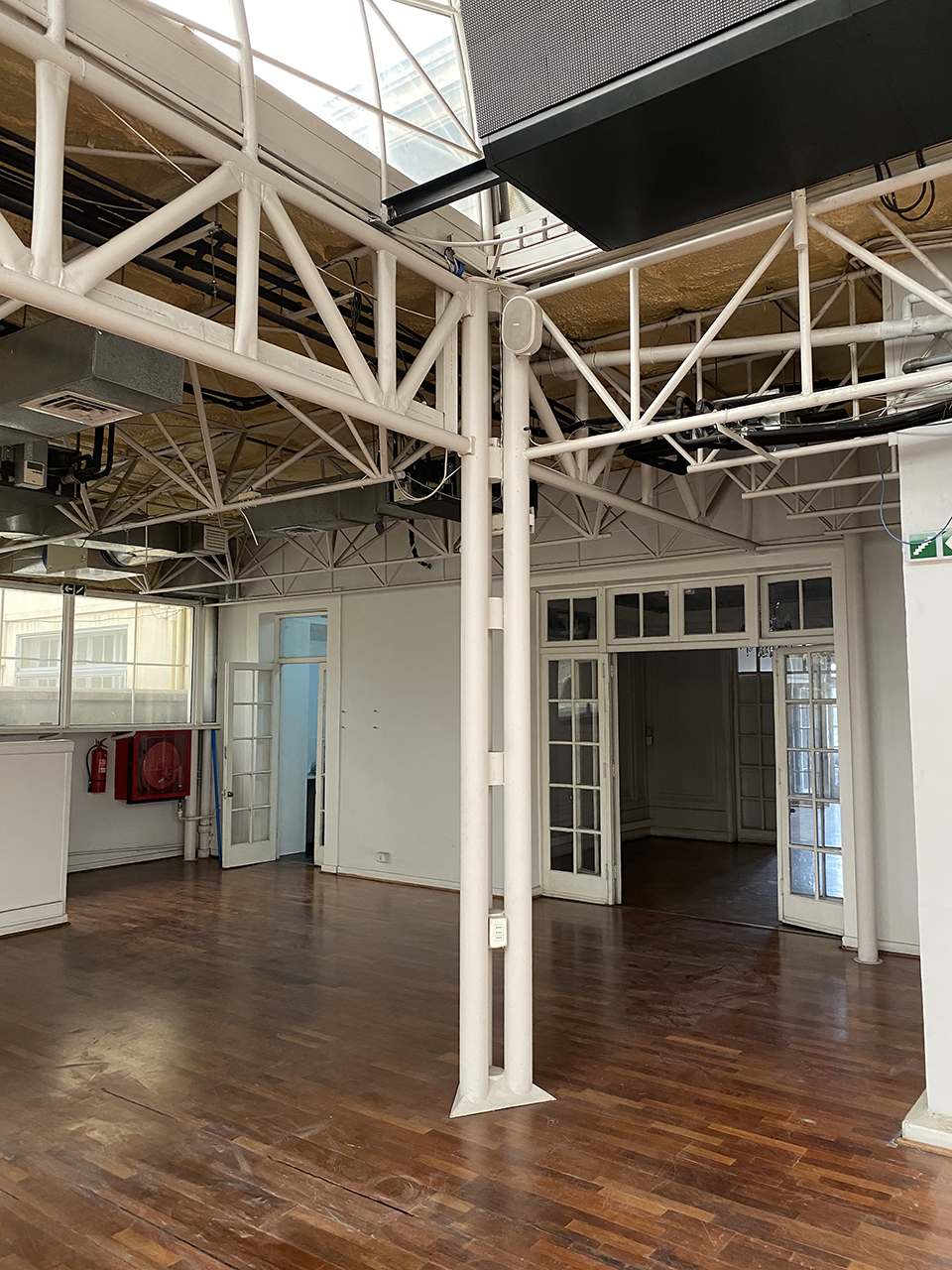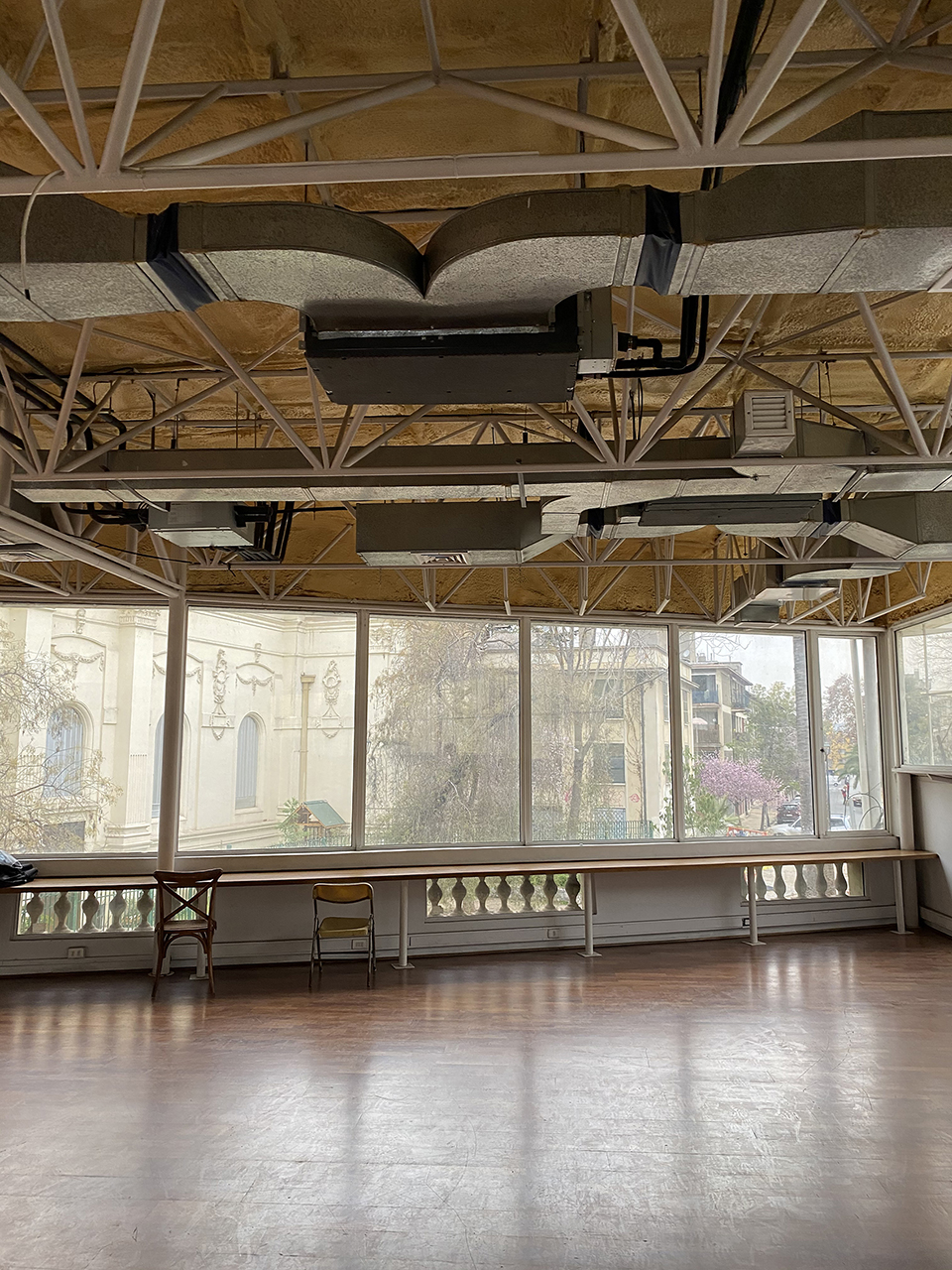在过去十年中,智利的初创企业已成为当地的龙头企业之一。政府的宏伟计划加上蓬勃发展的年轻创新者,使这个南美小国成为国际知名的新兴科技创业者基地,收获了大量有趣又成功的科技产品。Fintual便是这些初创公司之一,它成立于2016年,并且自2018年以来一直以通过科技与坦诚的沟通策略消除金融投资工具与平民百姓之间的隔阂为目标。直至2020年,该公司为4.7万名客户管理的资金超过4.25亿美元,与上年的7000名客户和4400万美元资金相比有大幅度增长,这意味着他们需要更多的团队成员和更大的办公空间。
Over the last decade, Chile’s startup scene has positioned itself as one of the leaders of the region. Ambitious government programs mixed with a booming generation of young innovators has turned the small South American country into an internationally renowned hub for emergent tech entrepreneurs, reaping an important number of interesting and successful technological products. Fintual is one of those groups of entrepreneurs—founded in 2016 and live since 2018—their goal is to bridge the gap between financial investment tools and the general non-savvy public, by way of technology and a candid and straightforward strategy of communication with their clients. As of 2020, they manage funds for 47 thousand clients at more than 425 million USD—a big jump from the 7 thousand clients and 44 million of the year before, which meant they needed more people on their team and eventually a bigger space.
▼项目外观,external view © Bruno Giliberto
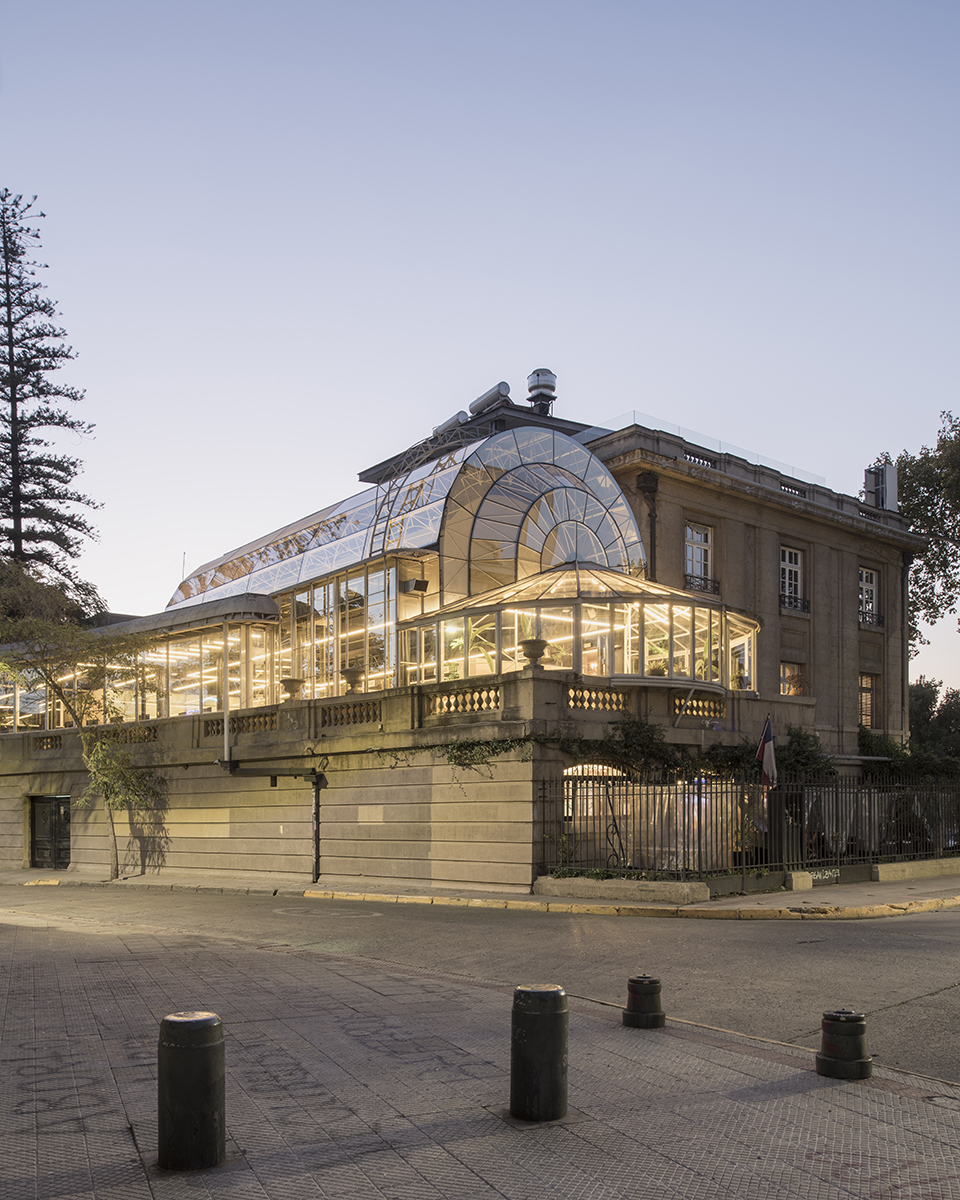
摩纳哥亲王宫(Droguett Palace)已有多年历史,它是著名建筑师塞尔吉奥·拉腊因·加西亚-莫雷诺(Sergio Larraín García-Moreno)在1931年为有钱人家建造的城市住宅,80年代初期,该家族的继承人将其改造成聚会场所,这座有12间卧室、共1400平米的建筑也成为当时主要的城市建筑之一。就在这个时期,300㎡的大型二层露台上的玻璃和钢拱顶赋予建筑独特的外观并使其获得“玻璃屋”的称号。2011年,聚会场所关闭并开始用作创业办公中心,最初服务于一家全球企业,后服务于智利政府开办的创业加速机构StartUp Chile。
The Droguett Palace has lived many lives. An urban residence for a wealthy family built in 1931 by famous architect Sergio Larraín García-Moreno, the 12-bedroom, 1400 sqm building became one of the city’s staples in the early 80’s when the family heirs transformed it into an event venue. It was at this time that its huge (300 sqm) 2nd floor outdoor terrace was covered with the glass and steel barrel vault that would give it its characteristic look and earn it the moniker “The Glass House”. In 2011 the venue closed its doors and started a new life as an office and coworking hub for innovation and entrepreneurship, first for a global conglomerate and later for StartUp Chile, the country’s government-run startup accelerator program.
▼改造前照片,photos before renovation © Studio Cáceres Lazo
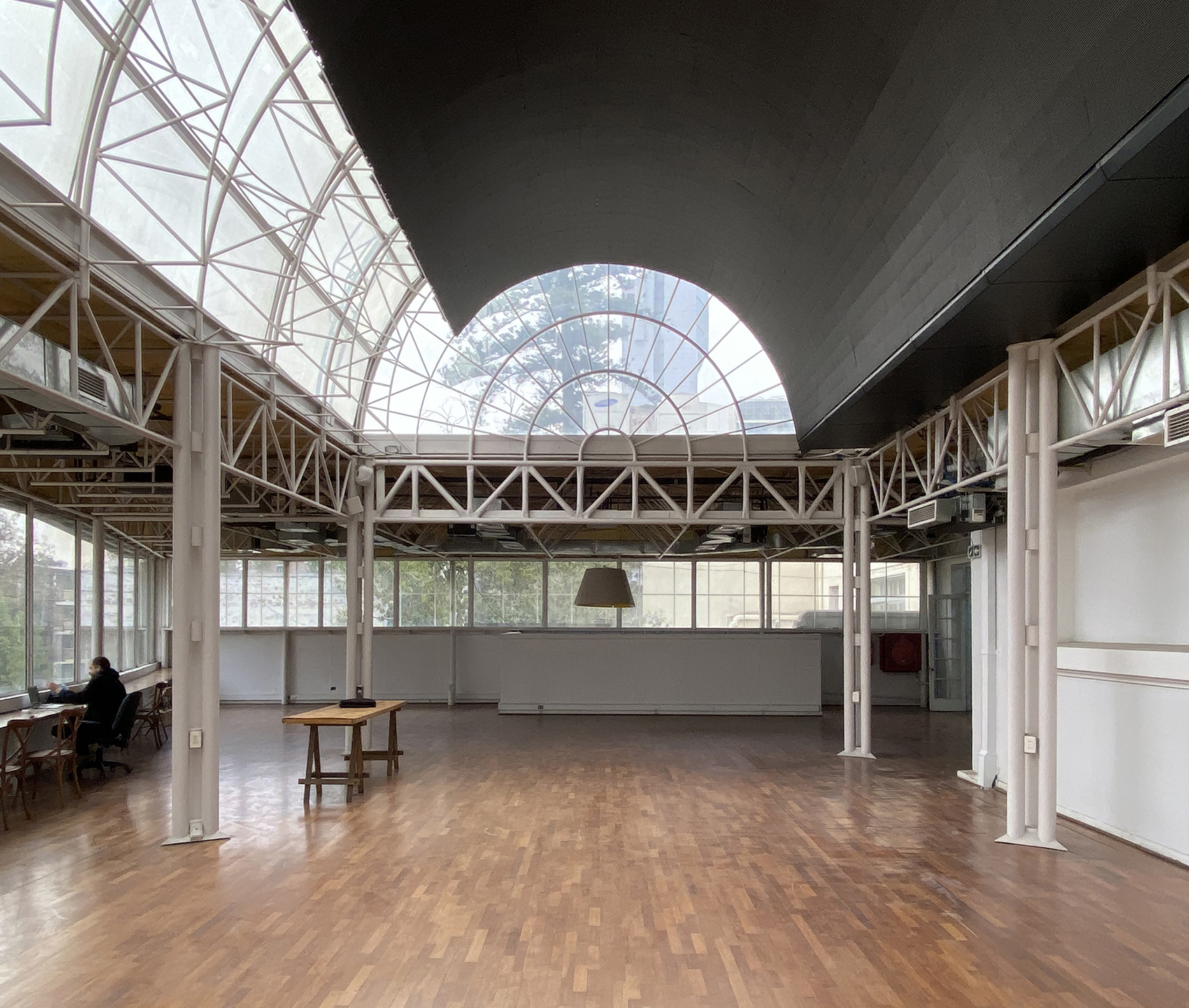
In late August of 2020, just as the city of Santiago was coming out of a 4-month-long lockdown, we were commissioned to design the headquarters of Fintual at the Droguett Palace. The brief was straightforward. The project would be developed in stages, with the first one being the main office floor located on the building’s second level. Needing to accommodate 40 to 60 employees at all times, the project was to provide multiple ways of working, from conventional desk work to hot desking, private and group conference calls, as well as more laid-back living room and coffee shop type situations. It had to be a fun space to work in and it should reflect the horizontal culture of the company.
▼改造后空间概览,overview of the renovated space © Bruno Giliberto
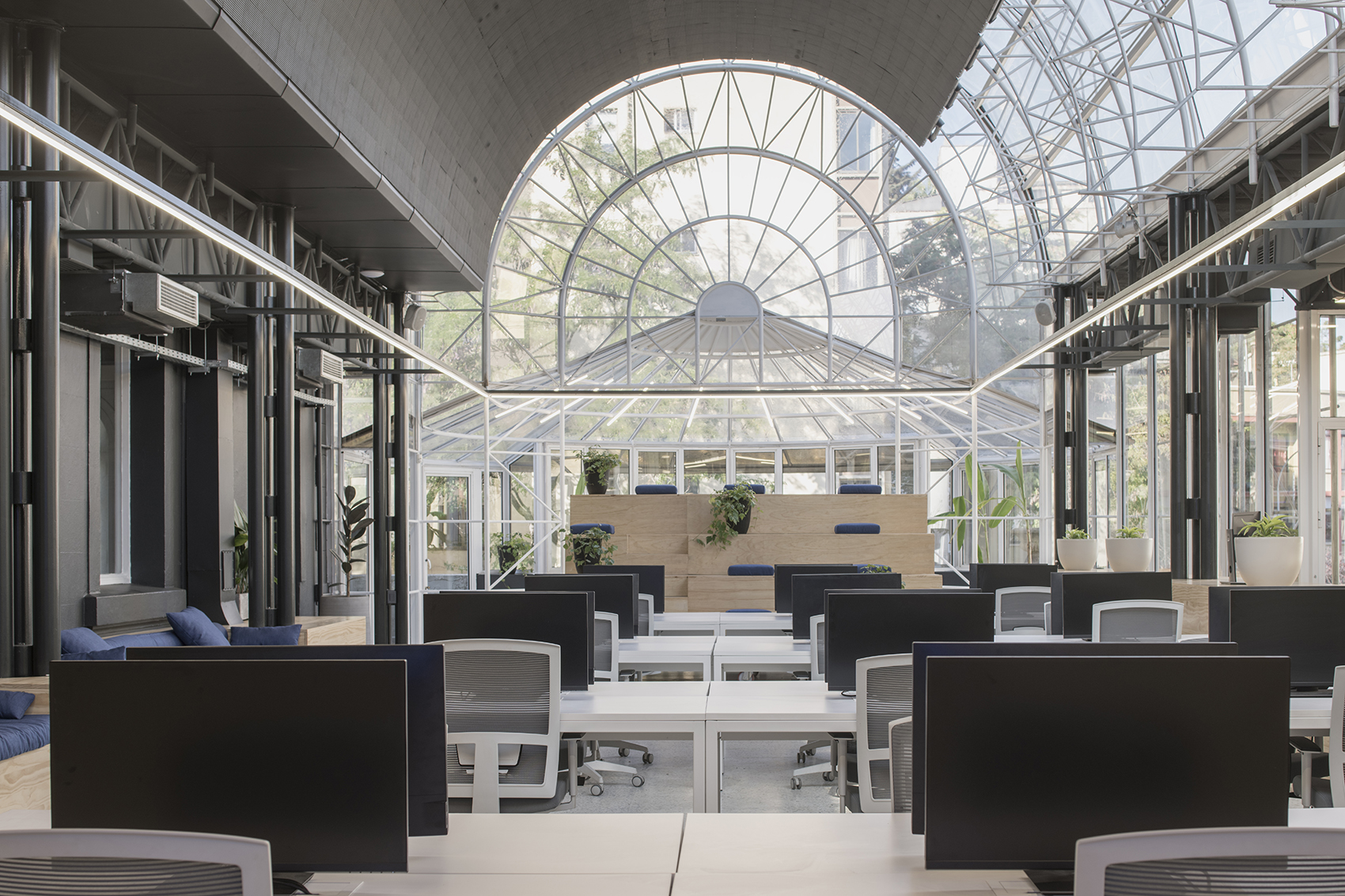
事务所收到通知,他们需要快速推进项目。竞赛期间,事务所在十天内完成了第一阶段的方案。由于宫殿内部出色的空间品质,室内需要的是较少的干预和较多的家具,改造主要集中在由玻璃筒拱遮罩的原室外露台或Fintual所称的“凉棚”上。凉棚的设计很简单:从上向下重复筒拱秩序。筒拱的矩形截面将空间分成两个主要区域,一个用于主要办公区,另一个形状不规则,用于不同类型的办公环境。为此,设计师开发了一系列人们熟悉的物件,并根据它们的外观或功能命名,例如,蛇形桌叫做“蠕虫”,私密舱体叫做“隔间”。除了哑光白色桌子,所有元素都采用同种材质:层压木板。整个空间被刷成炭黑色,从而消除共用设备、泡沫保温板和大量贯穿天花的桁架结构所产生的视觉干扰,并与宫殿的白色空间形成鲜明对比。在建筑生命周期的某个时刻,露台原有的豪华白色水磨石瓷砖被廉价的复合地板所覆盖。但去除覆盖物以后,原有的地面完好无损,只需要进行彻底抛光和密封处理即可恢复原貌。
▼轴测分解,exploded axon © Studio Cáceres Lazo
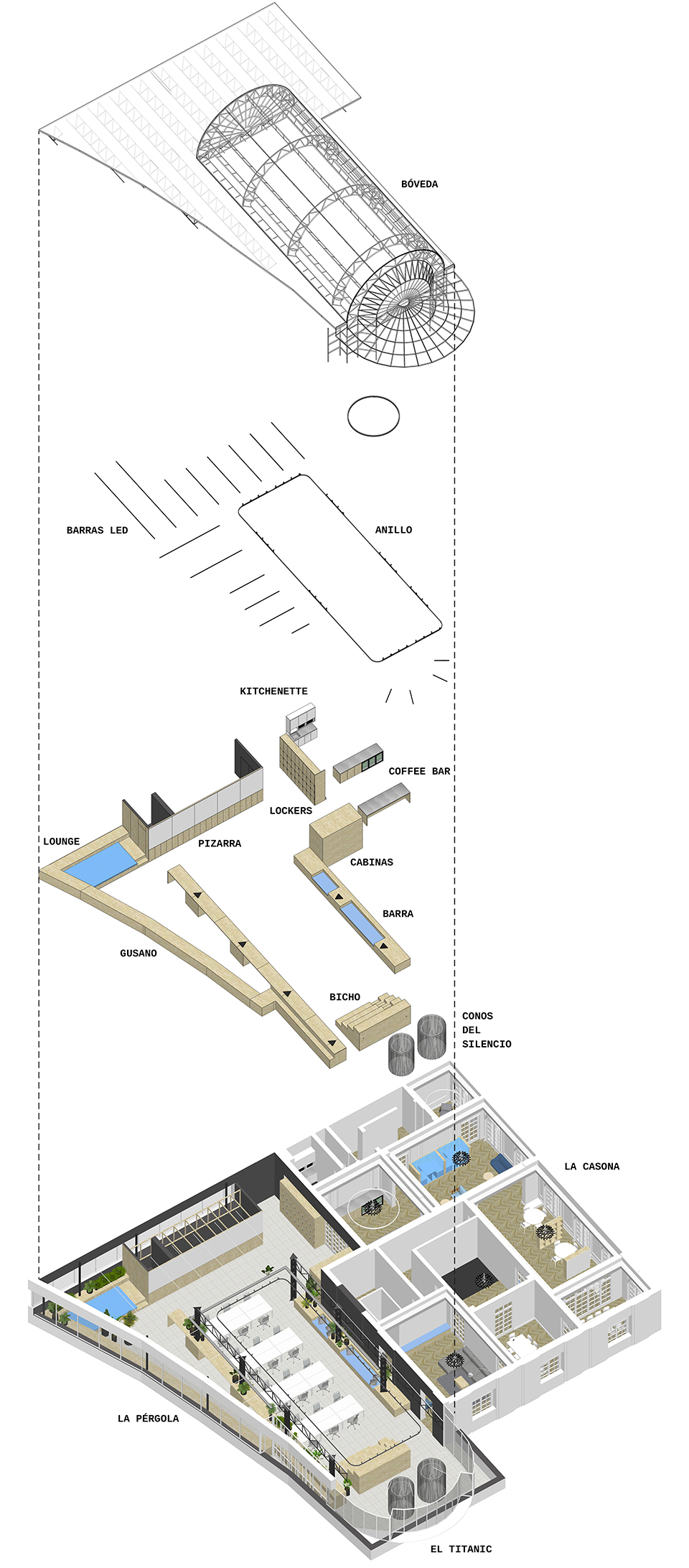
There was one caveat, though. They needed to move in fast. The general scheme for this first stage was developed in 10 days—during the competition phase—and concentrated primarily on the former outdoor terrace now covered with the barrel vault of glass, or “pergola” as Fintual calls it, since the interior of the palace needed less of an intervention and more of a furnishing because of its already superb spatial qualities. The plan for the pergola was simple: replicate the order established above by the barrel vault, down below. The rectangular cross section of the vault would then divide the space into two main areas, one for the working stations and the other—irregularly shaped—allowing different types of work situations. For this, we developed a series of objects, all familiar between each other and named according to what they looked like or their function (a snaking desk is “the worm”, while the private pods are “the booths”, for example). Except for the desks (fabricated in matte white) all the elements shared the same materiality: laminated wood boards. The whole space would be painted anthracite black, to cancel all the visual noise produced by utilities networks, insulation foam boards, and the array of girders and structures that run through the ceiling, and to make a stark contrast from the chalk white interior of the palace. At some point in the building’s life the original luxurious white terrazzo tile floor of the terrace was clad with a cheap photo-laminated engineering flooring. But after removing the coverings: there it was, all complete and in decent condition, all it needed was a thorough polish and sealant.
▼筒拱下的主要办公区,main office area under the barrel-vault © Bruno Giliberto
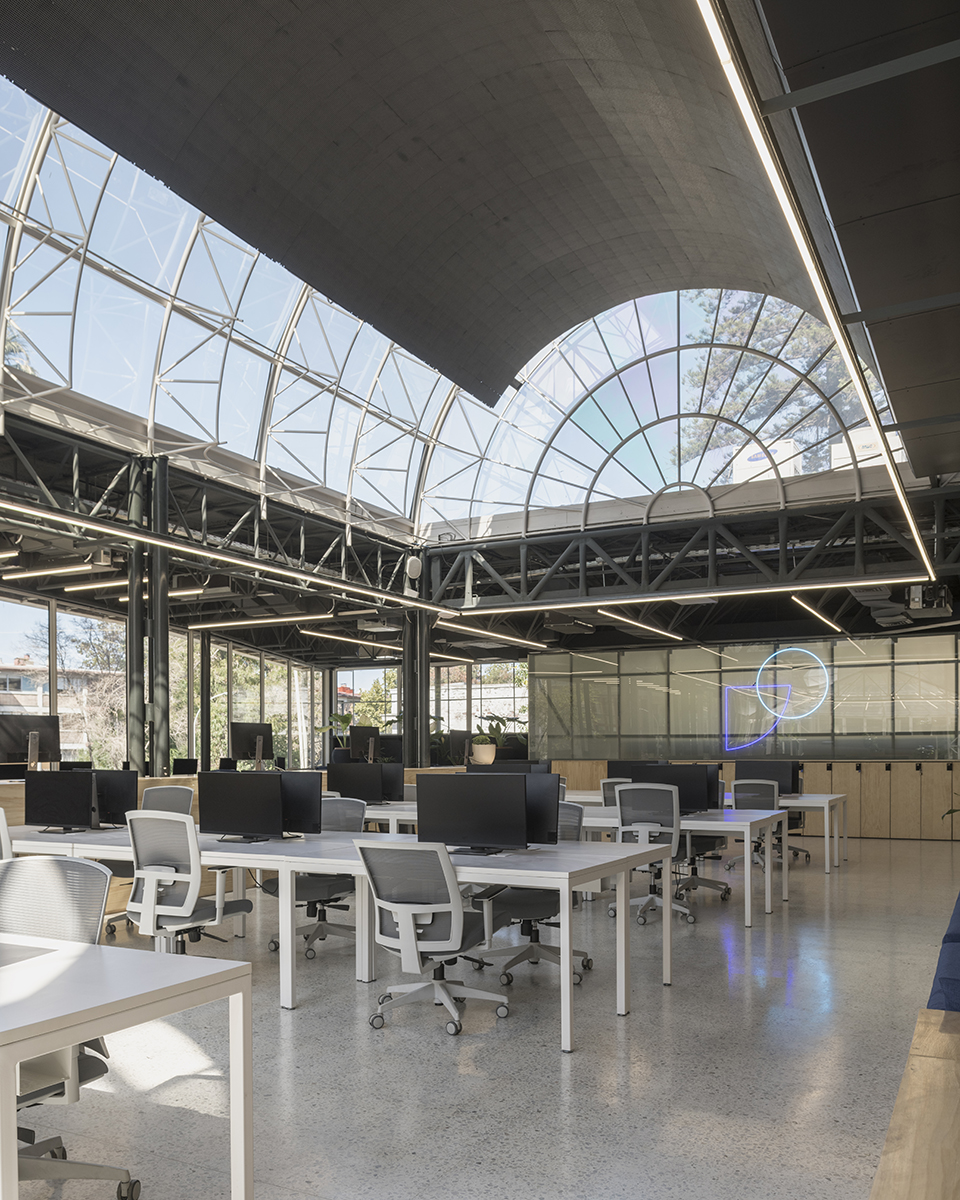
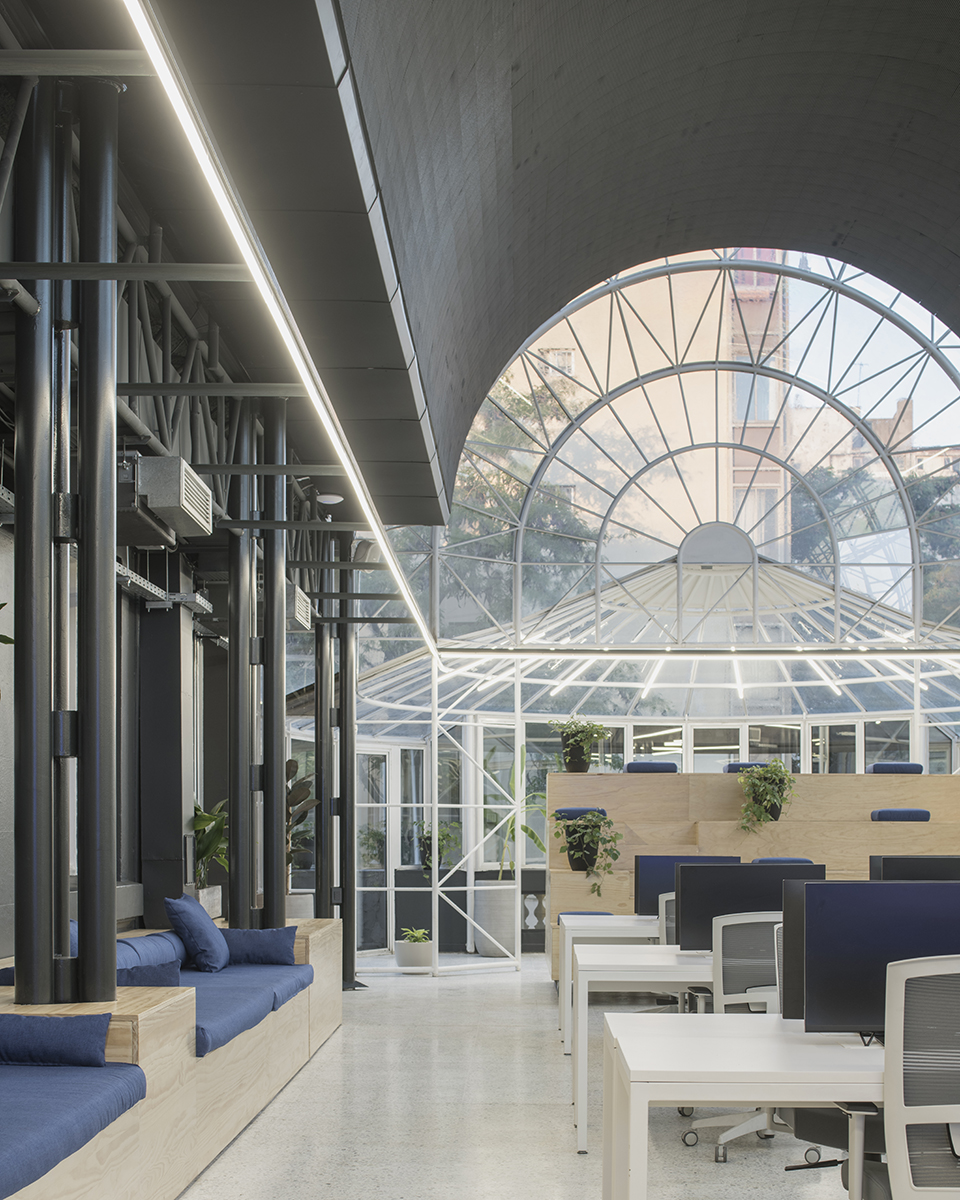
▼轮用办公区,hot-desking area © Bruno Giliberto
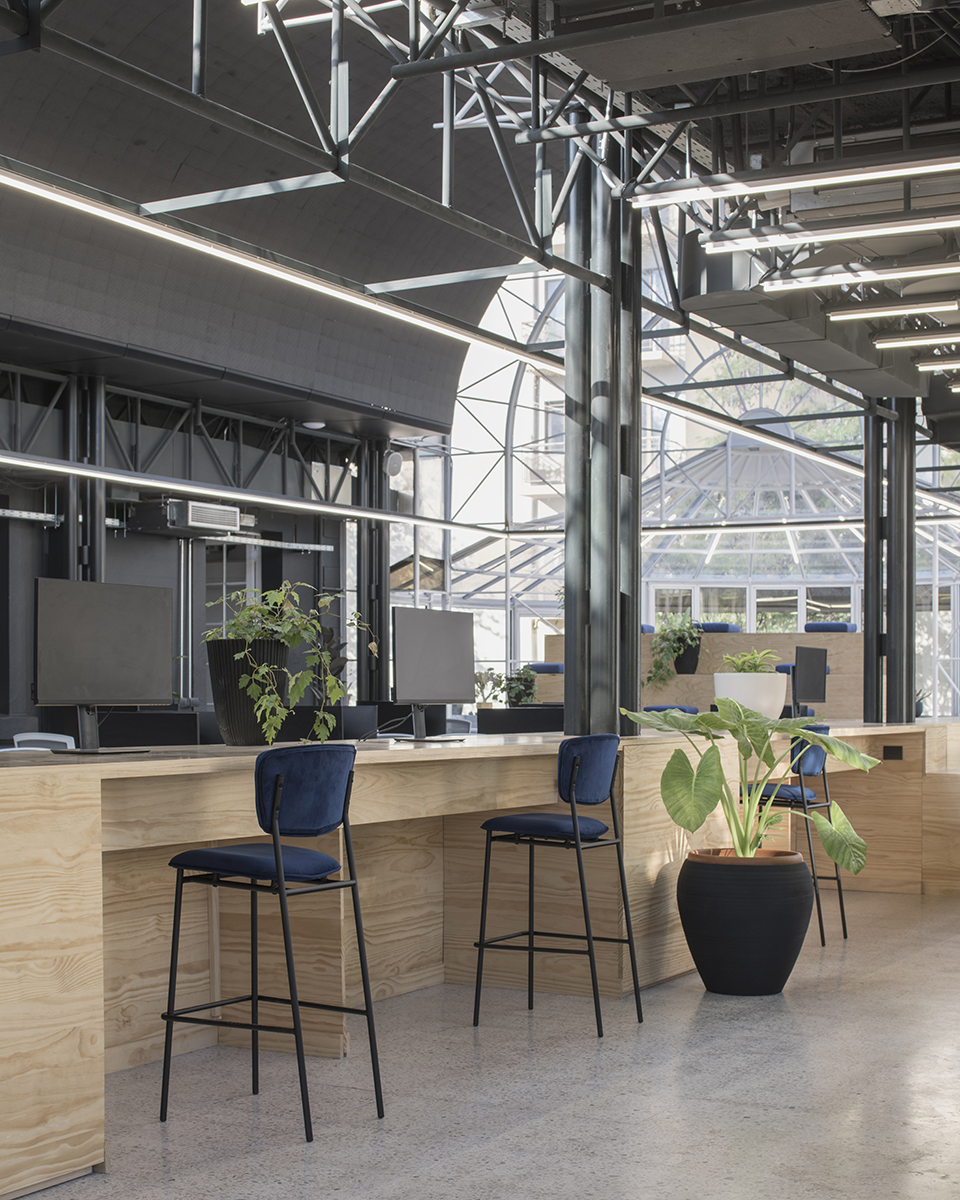
▼办公与休闲相结合,combination of office and leisure © Bruno Giliberto
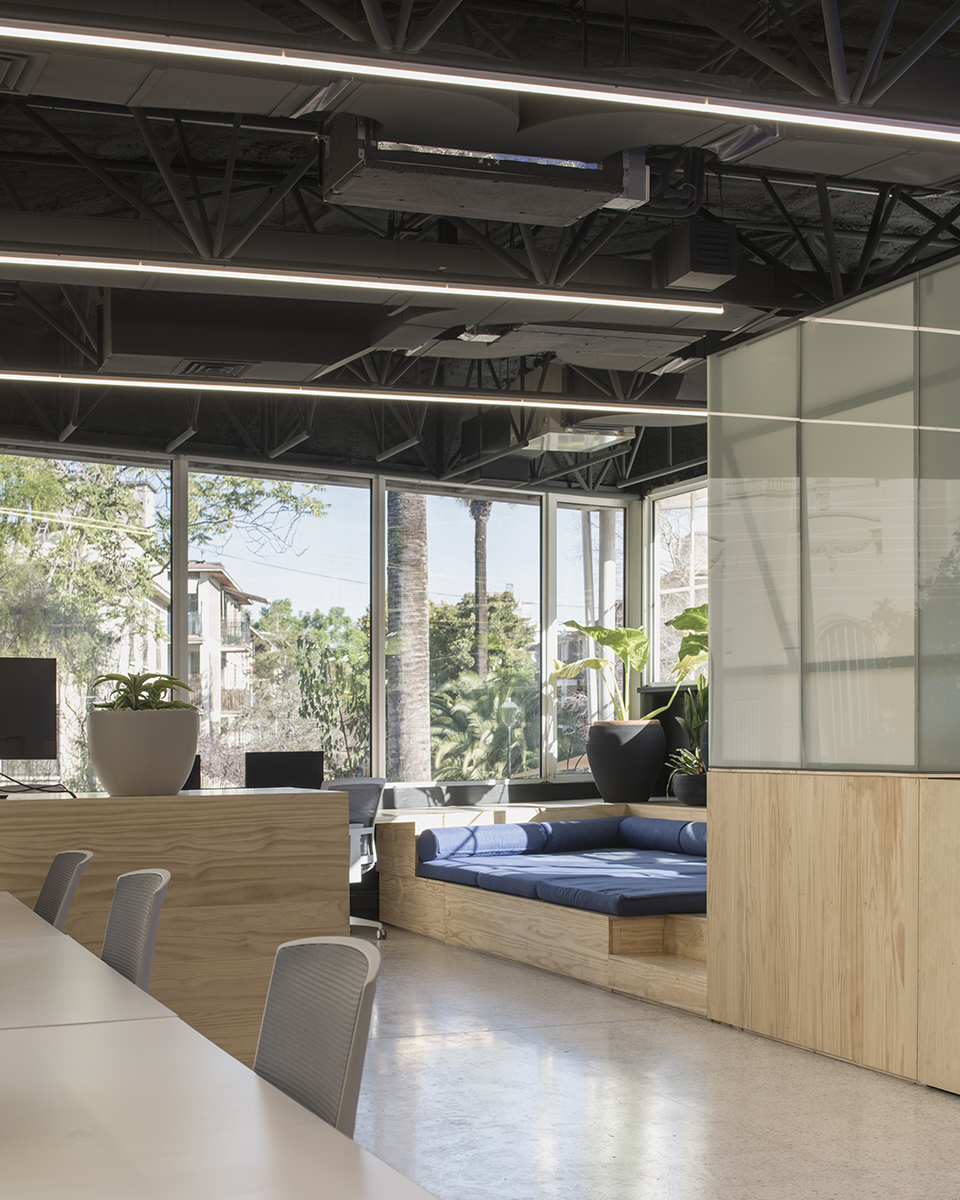
▼筒拱尽头的可移动阶梯式座位 © Bruno Giliberto movable stepped seats at the end of the barrel-vault
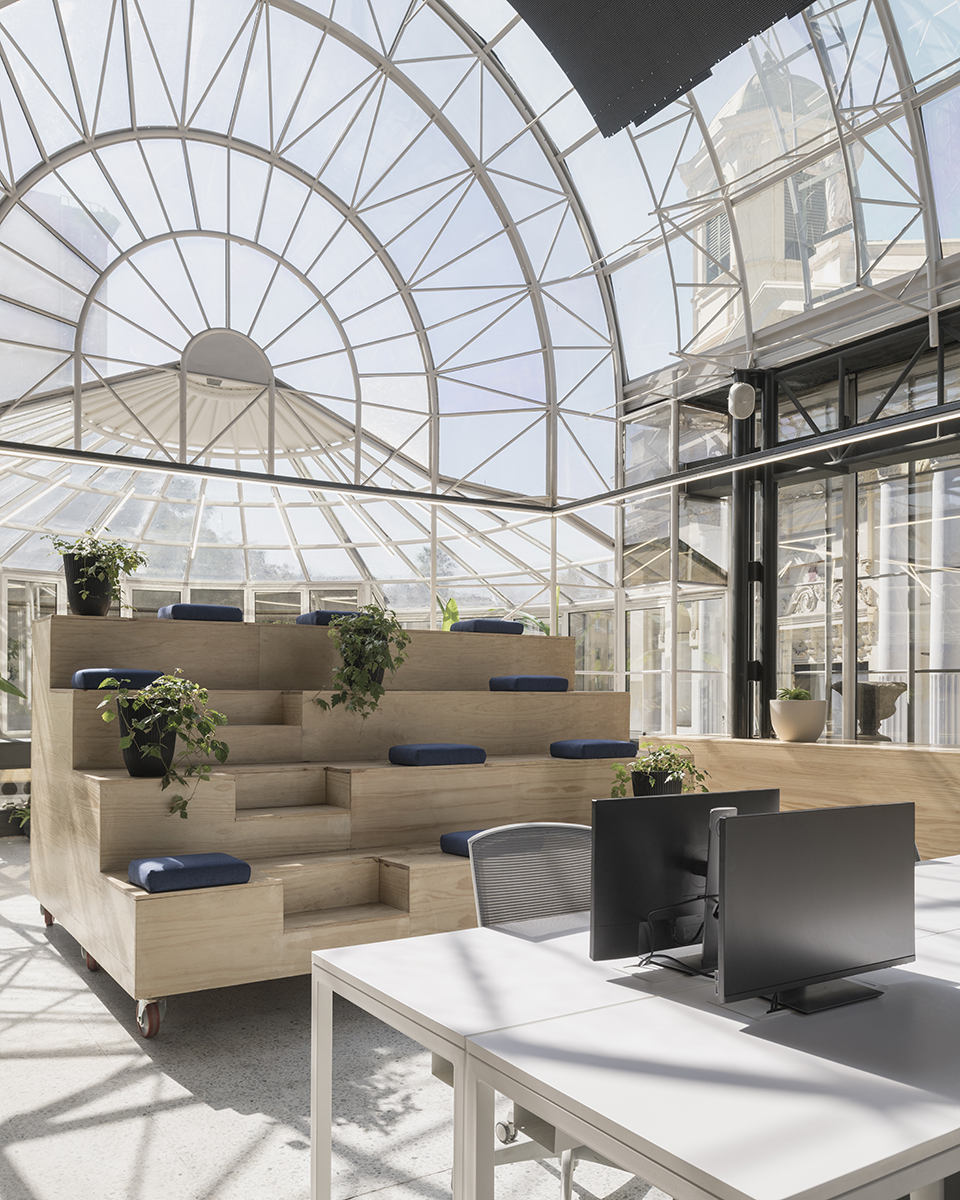
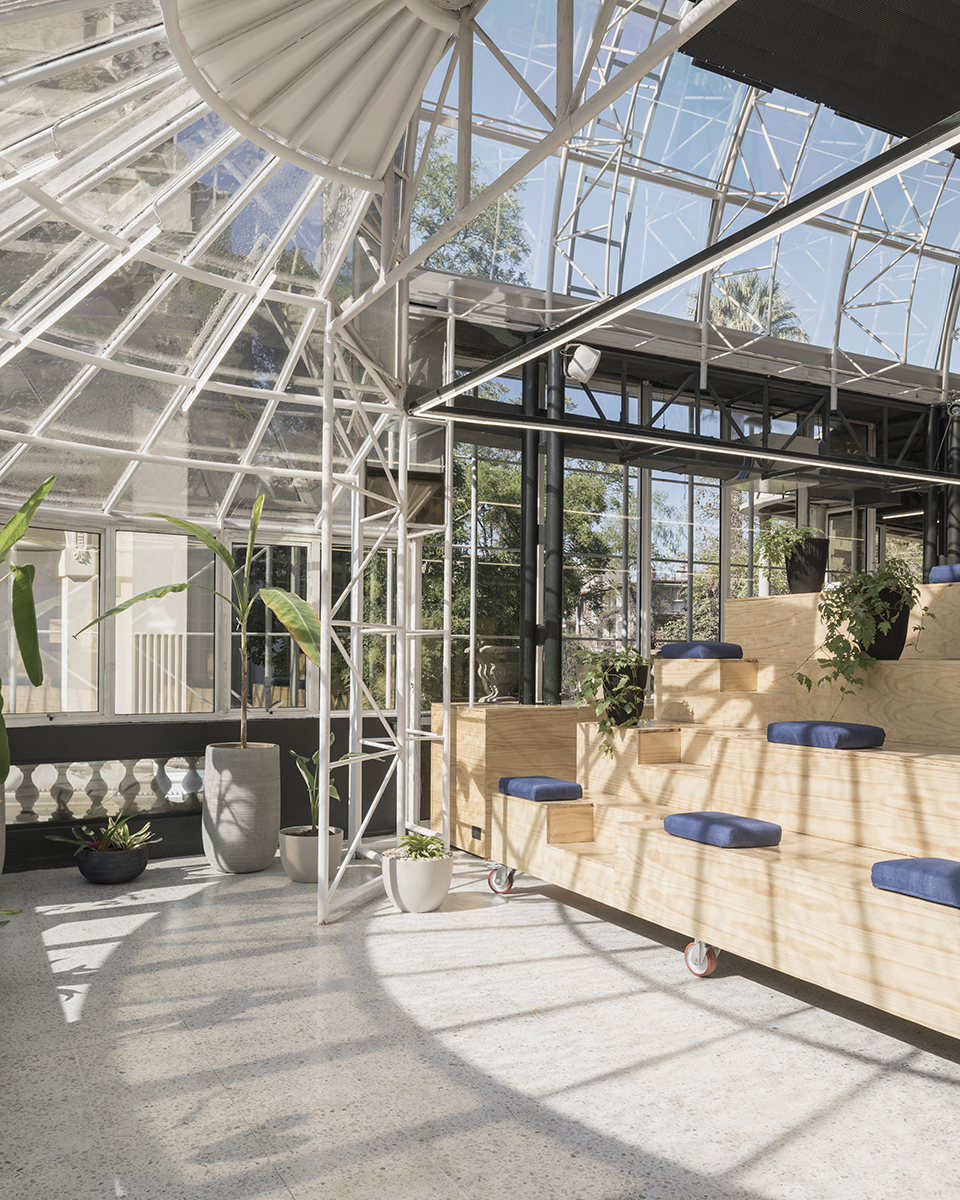
▼近景,closer view © Bruno Giliberto
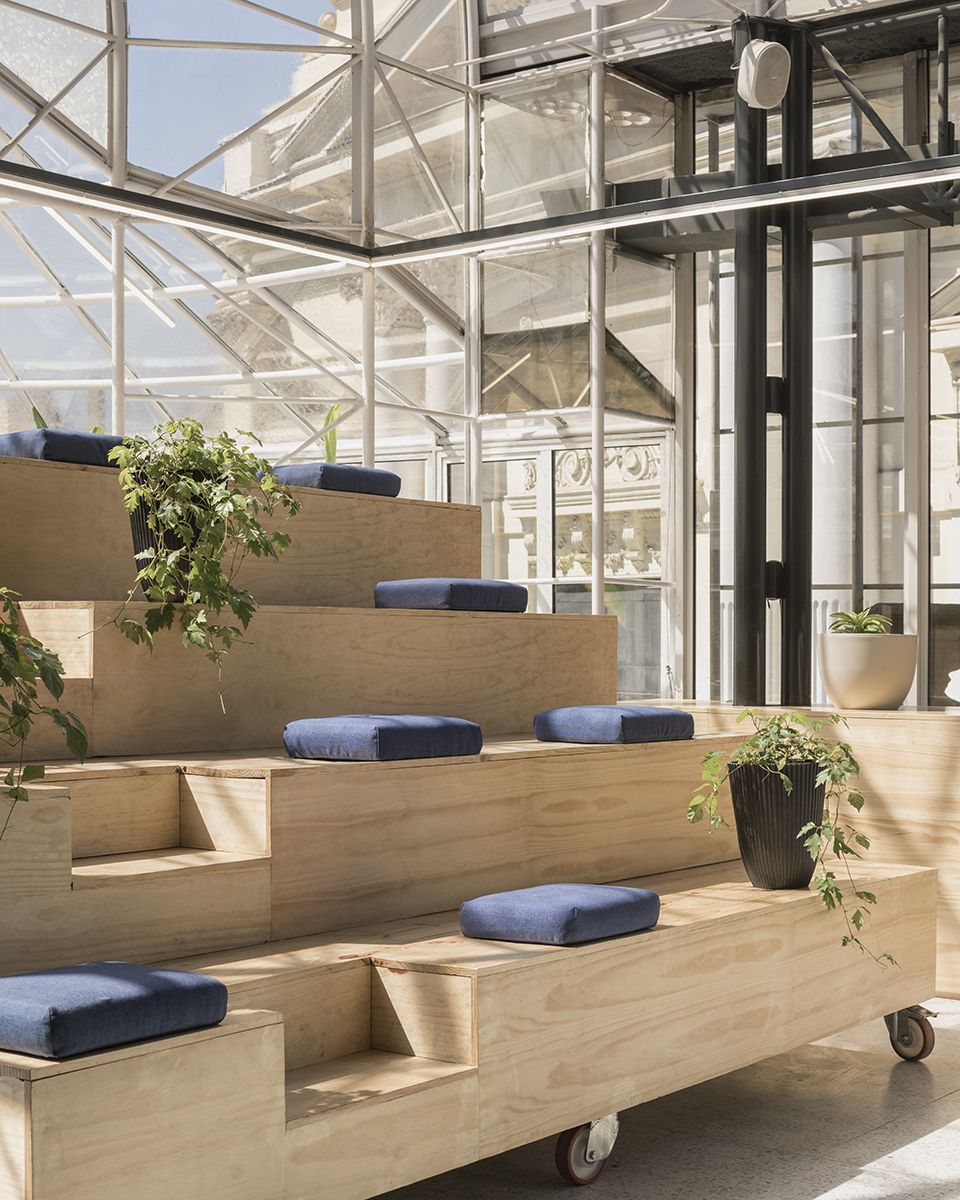
▼宫殿原有的白色空间,original white space of the palace © Bruno Giliberto
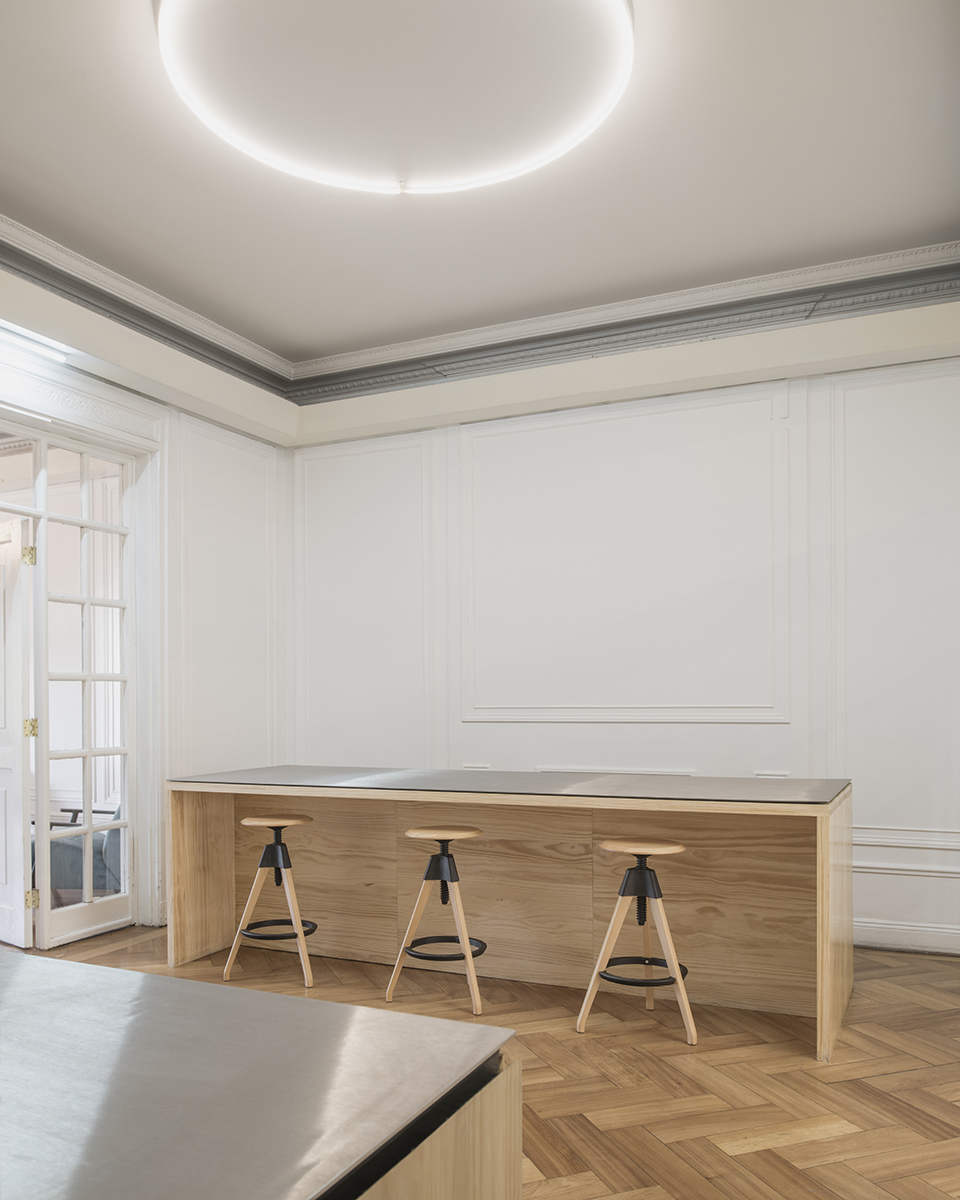

▼私密舱体,private pods © Bruno Giliberto

▼储物柜,lockers © Bruno Giliberto
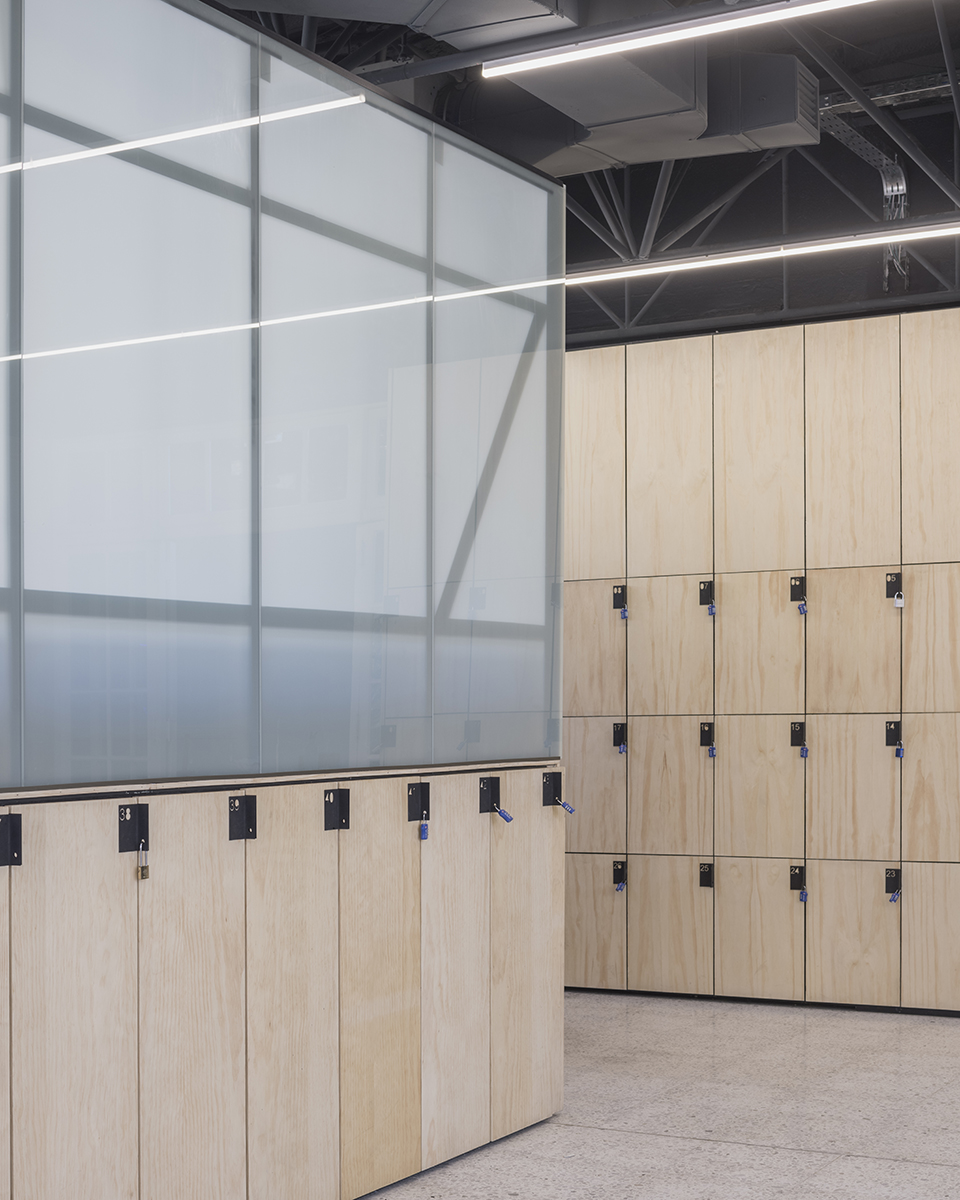
由于Fintual公司需要尽快入驻,事务所也需要时间制定施工文件,施工便被分成两个阶段:一是潮湿和有尘阶段,包括粉刷二层地面和抛光水磨石及宫殿一侧的拼花地板;二是洁净阶段,包括家具安装和电路布置。尽管项目正逢严格的交通限制、封锁、宵禁、全国建材短缺以及全球疫情,但每个人都参与其中,这似乎已是一项成就。事务所通过探索历史建筑面临的当代问题以及提出切合实际的设计策略,同时赞颂以创新和前瞻性文化为核心的Fintual公司,使该项目更具意义。
Since Fintual needed to move in quickly and we needed time to develop construction documentation, we divided the construction in two: a wet and dirty phase—including painting the entire second floor and polishing both the terrazzo as well as the beautiful parquet flooring on the palace side—and a clean phase—involving both on-site and off-site fabrication of the furniture and power network. That everybody involved made it work despite strict transit restrictions, lockdowns, curfews, a national shortage of building materials, and of course a global pandemic, seems like an achievement already. But the project is as rewarding by exploring contemporary architectural issues on heritage buildings, and hit-the-ground-running strategies to design, while celebrating the innovative and forward-thinking culture at the core of Fintual.
▼细部,details © Bruno Giliberto
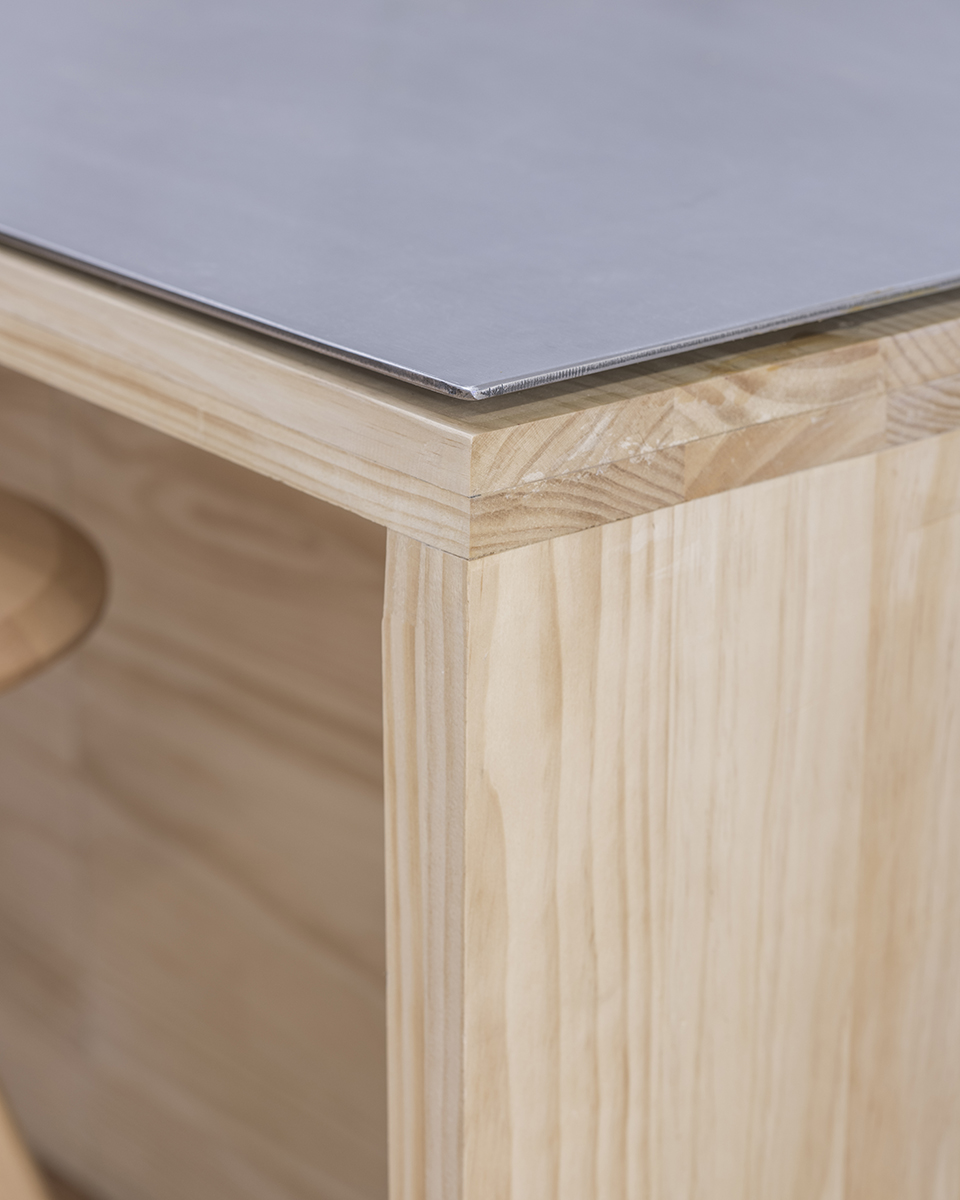
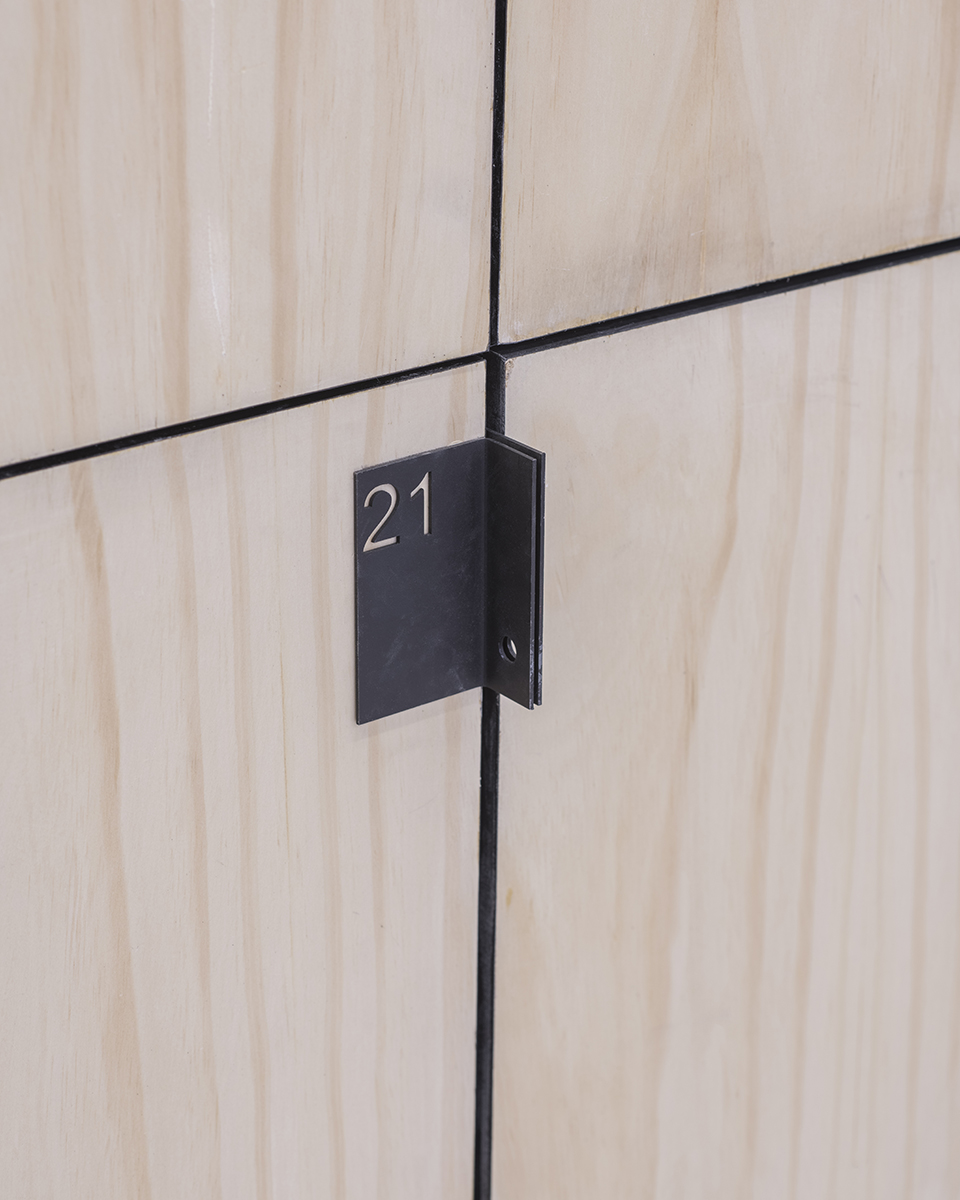
▼平面图,plan © Studio Cáceres Lazo

